Comparing Borax and Boric Acid for Termite Control
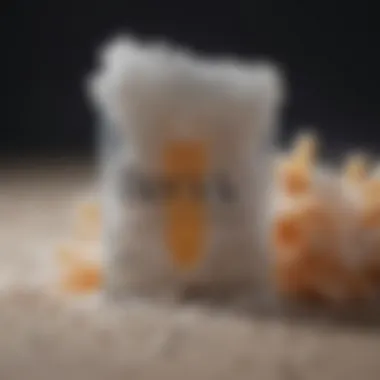
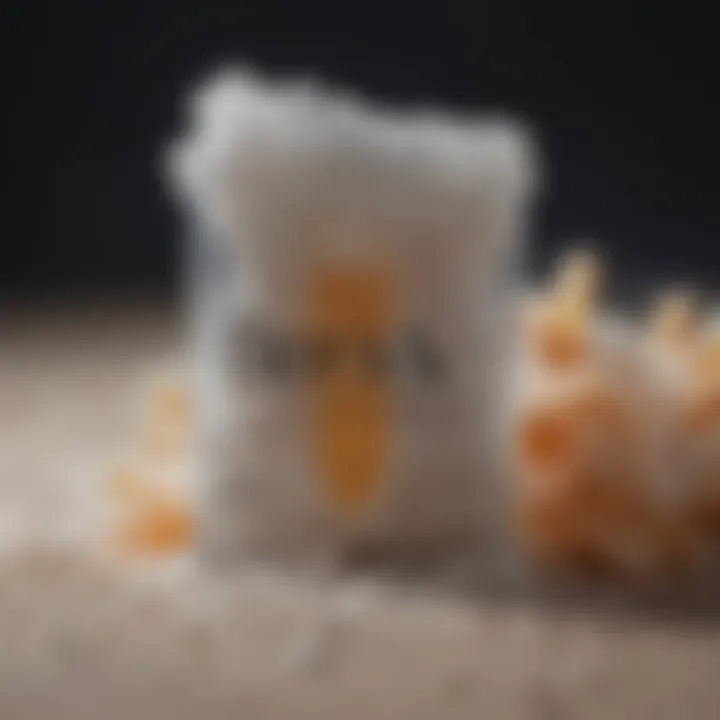
Intro
Dealing with termites can be likened to facing an uninvited guest who refuses to leave. These tiny pests, if left unchecked, can cause significant damage to your home, often leading to hefty repair bills. Understanding effective methods for termite control is essential for every homeowner. Among the various solutions available, two commonly discussed options are Borax and boric acid. Both are used in pest control, but they have different properties and applications that homeowners need to grasp.
This article examines Borax and boric acid, focusing on their effectiveness, safety, application methods, and overall suitability for termite management. By the time you finish reading, you will have a clearer picture of which of these substances might suit your needs the best.
Pest Identification
To tackle termite infestations, first, you must identify the pest in your home.
Detailed descriptions of common pests
Termites, often referred to as "silent destroyers," can be challenging to detect until significant damage has occurred. There are mainly three types of termites that affect homes:
- Subterranean termites: These are the most destructive type. They build their colonies underground, typically near damp or moist areas.
- Drywood termites: Unlike subterranean species, these termites can live in dry wood without needing contact with the soil. They are often found in furniture and wooden structures.
- Dampwood termites: Preferring moist and decaying wood, they usually infest dead trees and stumps.
Signs and symptoms of infestations
Identifying an infestation earlier rather than later is crucial. Here are some signs to watch out for:
- Mud tubes: These are pencil-sized tunnels that termites build to protect themselves while traveling between their colony and food sources.
- Wood damage: Look for hollow-sounding wood or visible holes. Chewed wood might have a fine powder-like substance, known as frass, nearby.
- Swarmers: In spring, winged termites leave their colonies to start new ones. Spotting these in your home is often a strong indication of an existing colony.
Prevention Strategies
Preventive measures are your first line of defense against termites.
Home maintenance tips for pest prevention
- Seal cracks and crevices: Inspect your home for potential entry points and seal them with caulk or other appropriate materials.
- Maintain proper drainage: Ensure that your gutters and downspouts direct water away from your home's foundation. This will help keep the surrounding soil dry.
- Stack firewood away from the house: Place wood at least 20 feet away from the structure. Termites love wood, so keeping it far from your home is crucial.
Natural deterrents and barriers
Some homeowners prefer using natural solutions, and there are several effective options:
- Nematodes: These microscopic worms attack termites and are a safe, natural option for pest control.
- Orange oil: Contains d-limonene, which is toxic to termites. Apply it directly to infested areas.
- Vinegar: Mixing vinegar and water as a spray can deter termites and other pests.
Treatment Options
When it comes to pest control, it's essential to weigh the available treatment options.
Overview of chemical vs. natural treatments
Chemical treatments, such as Borax and boric acid, offer a more intense approach to infestations but carry specific risks. On the other hand, natural treatments tend to be safer for your home, family, and pets.
Step-by-step guides for DIY treatments
Using Borax can be straightforward. Here’s a simple method for using it:
- Mix equal parts of Borax and sugar with water to create a paste.
- Apply the mixture directly to areas affected by termites.
- Monitor the site regularly and reapply as necessary.
For boric acid, the process is similar:
- Prepare a solution of boric acid mixed with water and sugar.
- Soak cotton balls in the solution and place them around the infested areas.
- Ensure the cotton balls remain moist for the best effectiveness.
Prelims to Termites
Understanding termites is more than just knowing they are pests. These creatures are a substantial concern for homeowners, especially in areas with warmer climates where infestations can flourish. Recognizing the patterns and behaviors of termites can make a significant difference in preventing and addressing infestations before they take a costly toll on property.
Termites primarily feed on cellulose found in wood, paper, and other organic materials. This eating behavior is what turns many homes into a feast for them if not managed properly. It’s vital for homeowners to understand that even minor signs of termite activity can lead to severe damage if left unchecked. The instinctual behavior of termites often pushes them to nest in structures and conceal themselves, making it challenging for even vigilant houses to spot an issue.
Additionally, it's critical to appreciate the role that moisture plays in attracting these pests. Termites are generally drawn to damp environments, which means understanding one's property and its maintenance is paramount in termite control. When dealing with potential treatments like Borax and boric acid, having a firm grasp of termite behavior will help homeowners make informed decisions about which solutions may be more effective for their specific situations.
"By the time you see them, it’s often two steps too late. Understanding what draws them in is half the battle."
Understanding how termites behave not only helps in identifying them but also helps in developing strategies for prevention and control. The insights gleamed herein will set a well-trodden path toward selecting suitable treatments, such as Borax or boric acid, which will be discussed later in this article. Ladies and gentlemen, these tiny invaders are not going to give up easily, and armoring yourself with knowledge is the best way to keep your castle safe.
Understanding Termite Behavior
To truly understand termite behavior, one needs to consider their social structure and feeding patterns. Termites operate in colonies that can house thousands or even millions of individuals. These colonies have a systemic hierarchy consisting of workers, soldiers, and reproductive members. Each type has a specific role, but it’s the worker termites that are primarily responsible for foraging for food and maintaining the nest. This collective behavior is what allows infestations to escalate so quickly.


Worker termites continually search for cellulose sources, and when they find a wood structure or other cellulose-rich material, they don’t just eat it alone; they bring it back to the nest. There it’s shared among the colony, leading to far-reaching damage within a short span of time. Understanding this behavior highlights the urgent need for prompt action when signs of termites are detected.
Termites are also drawn to areas where there is moisture, as it provides them not only with a source of hydration but also makes wood easier to chew. This preference leads them to seek out wet or decaying wood. Therefore, maintaining a dry and well-ventilated home can significantly discourage their presence.
Common Termite Species
In North America, the most common termite species include the Eastern subterranean termite, the Formosan termite, and the Drywood termite. Each comes with its own set of behaviors and preferences:
- Eastern Subterranean Termite: This is the most prevalent species in the U.S. They build tunnels underground and are known to invade homes from the ground up.
- Formosan Termite: This species is more aggressive and can create massive colonies. They are particularly known for causing extensive damage in a short time frame and are often found in southern states where climates are humid.
- Drywood Termite: Unlike their subterranean relatives, Drywood termites do not require contact with soil. They live in and consume dry wood, making them particularly tricky since they can dwell in walls and furniture.
Knowing about these species aids homeowners in accurately identifying any termite issues they may be facing. It also plays a crucial role in choosing between Borax and boric acid for effective termite control. Each species may respond differently to treatments based on its unique behaviors and habitat preferences.
Overview of Borax and Boric Acid
When dealing with termite control, understanding the options available is crucial for making informed decisions. This section delves into two prevalent substances: Borax and Boric Acid. Both may come from the same mineral family, but their uses, effectiveness, and properties can vary significantly. By exploring these differences, homeowners can decide which treatment aligns best with their specific pest control needs.
Chemical Composition and Properties
Borax, known scientifically as sodium borate, has a complex formula composed of sodium, boron, oxygen, and water. It appears as a white powder and possesses a slightly alkaline nature. On the other hand, Boric Acid, which is the acid form of boron, is a compound formed when boron is mixed with water. It comes in a granular or powder form and can act as both an acid and a base, depending on the surrounding environment.
The significance of these chemical properties cannot be overstated, especially when aiming for termite control. For instance, the alkaline nature of Borax makes it unpalatable for termites ingesting it. Conversely, Boric Acid's slightly toxic nature is effective in disrupting the digestive system of these pests.
Most importantly, both substances are known to dehydrate termites, making it hard for them to survive. This dehydration effect underscores their utility in integrated pest management strategies, particularly when combined with other methods.
Historical Use in Pest Control
Historically, both Borax and Boric Acid have carved out their niches within the realm of pest control. Long before these substances entered modern households, various cultures recognized their pest-repelling properties. As early as the 19th century, Borax was employed in various capacities, including as a household cleaner and insecticide.
Boric Acid found its fame a bit later as an effective component in ant bait and roach traps. Termites, however, have been harder to manage, leading to extensive research into the effectiveness of these compounds against such persistent pests.
Interestingly, the rediscovery of these compounds in contemporary pest control showcases a growing trend towards eco-friendly and less toxic pest management practices. Homeowners are increasingly drawn to solutions that, while effective, also mitigate potential harm to the environment and non-target species like pets — and both Borax and Boric Acid fit the bill.
In sum, understanding the chemistry and historical context of these agents not only aids in efficiency but also encourages a more responsible approach to pest control.
Effectiveness Against Termites
When it comes to battling termites, understanding the effectiveness of options like Borax and boric acid is vital for any homeowner or housewife. Termites can cause significant damage to a home, and investing in effective control measures is not just a choice—it's a necessity. This section dives into how these substances work against termites, their specific benefits, and important considerations that could impact their performance in real-world situations.
Mechanism of Action
Boric acid and Borax, while often used interchangeably, have different mechanisms of action that contribute to their effectiveness against termites.
Boric acid affects termites primarily through ingestion and contact. When termites consume it, it disrupts their digestive system, leading to dehydration and death. The subtlety of this approach is crucial; as termites feed on materials that contain boric acid, they unknowingly transport the poison back to their colony. The trickle-down effect can help eliminate not just the foraging termites but also their nest mates.
Borax, on the other hand, operates somewhat similarly but focuses more on the disruption of metabolic processes. Its sodium tetraborate compound interferes with the larvae and adults’ ability to metabolize. Furthermore, it can also create a barrier that deters termites from entering treated areas.
In practical terms, when applied properly, both substances can lead to a significant decline in termite populations. However, homeowners must understand that neither is an instant solution. Patience is key.
Comparative Studies and Research Insights
To get a clearer picture of how effective boric acid and Borax are against termites, let’s consider some key studies and insights gathered from various research tracks.
- Field Studies Showcasing Efficacy: A number of studies have been conducted that highlight the success rates in diverse environmental conditions. In multiple trials, homes treated with boric acid showed up to 90% effectiveness in killing termites over time. Conversely, Borax had varied results due to its efficiency diminishing in humid conditions.
- Long-Term Observations: Year-long studies have also illustrated that while both can control termite populations, boric acid may offer more sustained effects. Most notably, when applied in homes with consistent termite activity, it provided longer-lasting protection when compared to Borax solutions.
- Transport and Impact: Another noteworthy finding is how each substance is transported within a termite colony. Research found that boric acid, when ingested, can be methodically spread throughout the colony—this was less pronounced with Borax, which might not be consumed as readily by termites.
These insights are crucial for homeowners deciding which treatment to use. The choice may ultimately come down to the specific conditions present in a particular area and the effectiveness desired.
"Understanding the mechanisms and insights from existing research lays the groundwork for more effective termite management strategies."
Not all termite battles are won the same way, and knowing these nuances helps tailor the approach that aligns with individual home environments. In the realm of pest control, knowledge isn’t just power; it’s the key to safeguarding your home.
Application Methods
When it comes to tackling termite infestations effectively, understanding application methods is key. This section elaborates on how both Borax and boric acid can be put to use against termites, emphasizing the importance of targeted approaches. After all, knowing how to apply these solutions can dramatically influence their efficacy and impact.
DIY Methods for Homeowners
Homeowners often find themselves caught in a bind when dealing with unwanted pests, and taking matters into their own hands with DIY methods can prove both satisfying and effective. When using Borax or boric acid, they can choose from several practical strategies. Here are some common approaches:
- Boric Acid Baits: Homeowners can mix boric acid with sugar, making a bait that attracts termites. The sugar acts as a lure, and once termnites consume the bait, the boric acid interferes with their digestion, eventually leading to their demise.
- Dusting: For Borax, homeowners can dust affected areas with the powder form, ensuring that it reaches potential hiding spots. It's crucial to wear a mask during this process to avoid inhaling fine particles.
- Dilution Solutions: Mixing Borax with water creates a solution that can be sprayed on wood surfaces. This method is particularly effective for treating new structures or preventative spraying. Yet, careful attention to the concentration is vital as too much Borax can damage wooden surfaces.
- Foam Application: For persistent infestations, a boric acid foam can penetrate deeper into wood. Foam is beneficial as it expands and fills gaps that might be tough for solid pellets to reach.
Each method has its own uniqueness, and experimenting with the right one can provide homeowners with a sense of control when dealing with termites. However, looking out for personal safety while blending chemicals and handling the mixtures is central to this process.
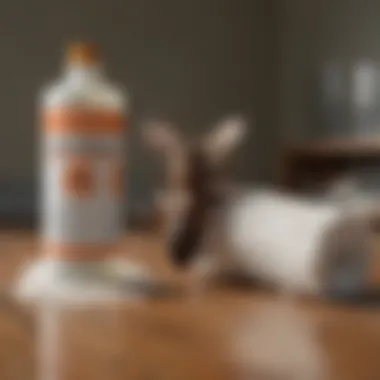
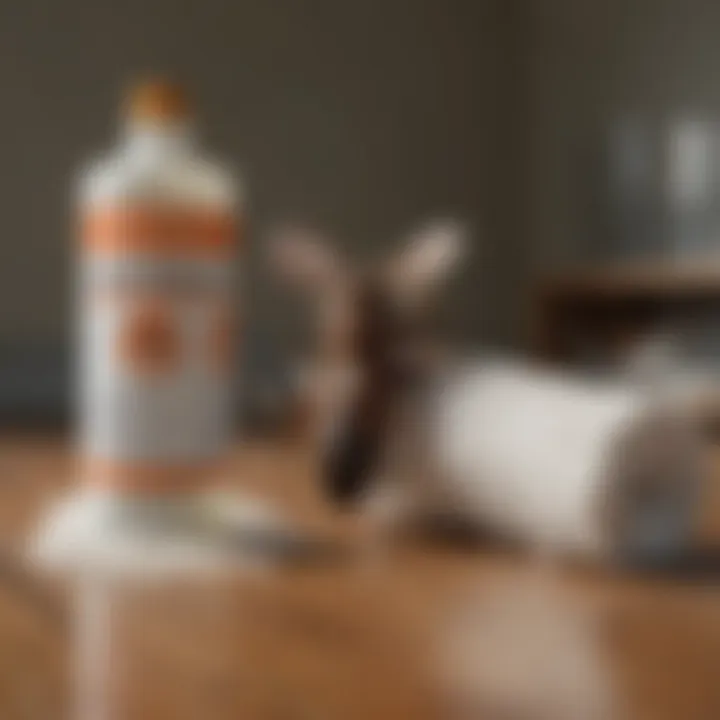
Professional Application Techniques
While some homeowners bravely take on the task themselves, others may prefer to call in the pros for a more tailored approach. Professional techniques often provide a depth of understanding and a careful application that may not be possible in a DIY setup. Here are some methodologies that pest control experts frequently use:
- Injectable Treatments: Experts sometimes utilize injectable treatments, where Borax or boric acid solutions are directly injected into infected wood or soil. This ensures that the treatment is not only effective but also sustainable.
- Perimeter Treatments: Professionals commonly spray a continuous barrier treatment around the foundation of buildings, effectively creating a defensive line against termites.
- Termite Monitoring Systems: Some pest control companies install monitoring stations that contain bait tubes filled with boric acid. This allows specialists to track termite activity and apply treatments dynamically based on real-time data.
- Integrated Pest Management (IPM): Many experts employ an IPM approach, which combines chemical treatments with biological methods and habitat modifications to control and prevent termite infestations effectively. This holistic strategy minimizes the reliance on pesticides.
Safety Considerations
When dealing with termites, it’s crucial to go beyond just selecting effective treatments like Borax and boric acid. Understanding safety considerations is paramount to ensuring that any pest control measures taken do not inadvertently harm humans, pets, or the environment. Homeowners often prioritize quick fixes, but overlooking safety can lead to long-term health issues or environmental degradation.
Health Risks for Humans and Pets
Borax and boric acid, while generally recognized for their efficacy, do come with their own set of potential health risks. For humans, even though these compounds are considered low in toxicity compared to other pesticide options, they can still present hazards. Exposure can lead to skin irritation or respiratory problems if inhaled. This is especially important for families with small children or elderly members. Proper measures should be taken when applying these substances.
Pets are also susceptible to the effects of Borax and boric acid. For instance, ingestion can lead to gastrointestinal discomfort or other reactions. It’s wise to ensure areas treated are out of reach or that pets are confined during the application and residual periods. Furthermore, signs of distress in pets should be taken seriously, and contact with a veterinarian is advisable. Regular monitoring after treatment will help mitigate these risks.
"Think of safety as the shield while you battle termites; without it, the war could be lost in silence, affecting the very entities you aim to protect."
Environmental Impact
Using Borax and boric acid as pest control methods introduces an interesting dynamic. While they are less harmful compared to traditional chemical pesticides, they still have an impact on the ecosystem. Boric acid can leach into the soil, potentially affecting beneficial microorganisms. Although it is often touted as being biodegradable, its breakdown can vary based on environmental conditions. Users should be aware of the potential for runoff, particularly if used outdoors in proximity to water sources.
Moreover, while effective against targeted pests, Borax can inadvertently affect non-target species. This underscores the need for careful application. Create a strategy that minimizes risk, such as using targeted applications rather than broad dispersal.
In summary, by acutely observing these safety considerations during the application of Borax and boric acid, homeowners can not only ensure their own safety and that of their loved ones but also contribute positively to the environment. Keeping these elements in mind will allow individuals to approach termite control comprehensively, without sacrificing health or ecological balance.
Efficacy of Borax in Termite Control
When it comes to dealing with those wood-munching nuisances we call termites, understanding the efficacy of Borax is essential. This topic is pivotal for homeowners looking for effective solutions to protect their homes. Borax, or sodium borate, has been recognized not only for its pest control abilities but also for its unique chemical properties that can influence termite behavior.
Using Borax in termite control offers several advantages, such as being less toxic to humans and pets compared to many traditional pesticides. It works by disrupting the termite's digestive system and its ability to convert food into energy, ultimately leading to their demise. Additionally, its long-lasting residual effect means it can provide ongoing protection if applied correctly. However, it's not a miracle cure. We must consider both its outcomes and limitations to fully grasp how best to wield this powerful compound against termites.
Application Outcomes and Limitations
When Borax is applied effectively, the results can be significant. Borax can be mixed with water and used as a spray, or it can be applied in powder form. In many cases, homeowners have reported decreased termite activity within weeks of application. That being said, this isn't a one-size-fits-all solution.
- Outcomes
- Limitations
- Immediate reduction in visible termites.
- Long-term weight of efficacy; as the termites share food and groom each other, the impact can spread throughout the colony.
- Safe alternative compared to chemical pesticides, allowing for peace of mind for families and pets.
- Requires persistent monitoring. Termites can re-infest if no preventive measures are held in place over time.
- Effectiveness can diminish in the presence of significant moisture, which is often found in environments where termites thrive.
- In severe infestations, it might not be sufficient alone. In such cases, it might require a combination of methods to truly eradicate the problem.
Real-World Case Studies
To really understand the practical application of Borax in termite control, consider these real-world examples where it has made a tangible difference.
- In a home located in the humid Southeast United States, a family found termite damage in their wooden structure. After applying a Borax solution to the affected areas, they saw a nearly 80% decrease in termite activity within three months. The homeowners not only saved on costly chemical treatments but also felt safer having Borax in their home.
- Another case involved a property management company that managed several apartments with a history of termite issues. They opted for Borax treatments in common areas. The result was a significant cut in costs related to traditional pest control, and follow-up visits showed a drop in termite population by nearly half after consistent applications.
- However, a concerning example involved a new homeowner who used Borax as their sole treatment method, thinking it would solve their termite problem overnight. The infestation persisted because they had not adequately addressed moisture issues in their crawl space. This caper serves as a lesson that while Borax is effective, comprehensive measures are crucial.
These cases illustrate both the potential of Borax and underscore the necessity for strategic planning in dealing with termites. Always remember: a proactive, well-rounded approach is key when managing termite control initiatives.
Efficacy of Boric Acid in Termite Control
When it comes to combating termite infestations, boric acid has been a topic of much discussion. Its relevance in this context cannot be overstated. Not just a household chemical, boric acid presents several specific benefits that make it a worthy contender against termites. First, though, let's explore how it works and the positive outcomes that can be expected when applied effectively.
Application Outcomes and Limitations
Boric acid acts as a stomach poison to termites. When ingested, it disrupts their digestive systems, leading to dehydration and ultimately death. This method provides a steady path to reducing termite populations, making boric acid a long-term solution, rather than a quick fix.
One notable application method is through baiting systems. Homeowners can place bait stations around their properties, allowing termites to feast on the poisoned bait and take it back to their colonies. However, an important limitation exists here: if termites are not attracted to the bait, or if the bait stations are positioned poorly, the efficacy diminishes quickly.
Another hurdle is that boric acid is most effective against drywood termites. In cases of subterranean termites, the treatment must go deeper into the ground and might require a more substantial application. Hence, while it's reliable, it is not foolproof.
- Advantages of Boric Acid:
- Limitations:
- Highly effective against certain termite species.
- Has a low toxicity level for humans and pets.
- Acts as a repellent when applied correctly, preventing future infestations.
- Limited effectiveness on subterranean termites if not used in conjunction with other treatments.
- Requires consistent application to maintain effectiveness.
Real-World Case Studies
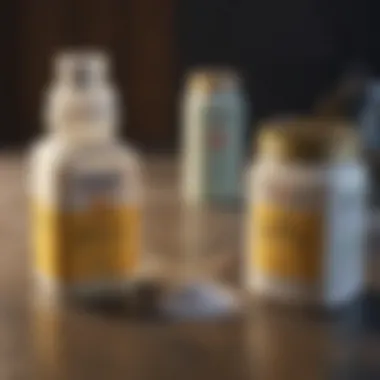

Examining case studies adds valuable context to our understanding of boric acid in practice. For instance, many homeowners have reported successful eradication of drywood termite populations within several months of applying boric acid treatments.
One striking case from a homeowner in California, who faced a significant drywood termite infestation, reported noticeable results within just a few weeks of placing boric acid-laced bait stations around her home. Within a year, she was able to eliminate the infestation without resorting to more toxic methods. In her case, the strategic use of boric acid not only eliminated the termites but also served as an effective preventative measure against reinfestation.
"Boric acid worked like a charm for me. Not only did it get rid of the termites, but I can sleep easier knowing it’s safe for my kids and pets."
However, it’s important to mention varying outcomes. For example, some have experienced a slower timeline, where the effectiveness was present but not glaringly obvious right away. Results can depend heavily on the degree of infestation and whether the treatment was undertaken correctly.
In summary, while boric acid offers a promising tool against termites, its success largely hinges on proper application methods and the specific conditions of an infestation. As homeowners weigh their options, understanding these outcomes and limitations uniquely positions boric acid in the market of pest control as both a feasible and safe solution.
Cost-Effectiveness of Treatments
When it comes to managing termite outbreaks, understanding the cost-effectiveness of various treatments is essential. Homeowners often find themselves balancing effective solutions against the weight of their wallets. Considering how termites can cause significant structural damage, choosing the right extermination method is not just a matter of practicality but also one of financial prudence.
Why Cost-Effectiveness Matters
Cost-effectiveness isn't merely about choosing the cheapest option; it involves determining the best value over time. These two substances, Borax and Boric Acid, often appear as contenders in pest control, but their price tags and efficacy can differ significantly. This section will dissect the financial landscape of termite treatment, highlighting the importance of long-term solutions over short-term fixes.
Comparative Cost Analysis
A simple glance at the prices of Borax and Boric Acid might lead one to believe that either could serve just as well. However, a deeper dive reveals nuances that impact total cost of ownership. Here are some key points:
- Upfront Costs: Typically, Borax is less expensive than Boric Acid per pound. However, homeowners should consider how much of each product is required for effective termite control.
- Treatment Longevity: Boric Acid may have a higher upfront cost, but its application often lasts longer in the environment, which could lead to less frequent reapplications. Conversely, Borax might require more treatments, incrementally inflating overall costs.
- Effectiveness Against Infestation: If an infestation is severe, the effectiveness of a product would play a crucial role in determining the total monetary implications. Investing in a more effective solution might save money in the long run by preventing further damage.
Considering these factors is crucial in laying out a complete cost analysis. It's often the hidden costs associated with insufficient treatments which catch people unaware, leading them to spend more than initially budgeted.
Economic Feasibility for Homeowners
Taking the plunge into pest control might feel daunting. Homeowners must consider economic feasibility before making decisions that will impact not only their finances but also the well-being of their homes. Here are several aspects to keep in mind:
- Initial Budgeting: Before purchasing any termite treatment, building a clear budget is essential. Look past cabinet space for Borax or Boric Acid; check your budget for additional ongoing maintenance.
- DIY vs Professional Treatments: Homeowners often grapple with the choice between handling termite issues themselves or hiring professionals. While DIY solutions may seem cost-effective, one must weigh the associated risks. Sometimes, a professional exterminator can save money in the long run by effectively dealing with infestations on the first go.
- Consequences of Inaction: Ignoring a termite problem can lead to structural damage, which translates into significantly higher repair costs. Investing a little upfront might be more economical than shelling out for expensive renovations later.
"A penny saved is a penny earned," is especially poignant when faced with termite issues. Making informed choices about Borax or Boric Acid may be the difference between a solid foundation and a crumbling home.
In summary, the cost-effectiveness of Borax and Boric Acid shouldn't only focus on sticker prices but take into account overall effectiveness, potential future costs, and the broader impact on homeowners' peace of mind. Understanding these complexities allows homeowners to make choices that optimize their investment and safeguard their homes.
Long-Term Solutions for Termite Prevention
When it comes to safeguarding your home against termites, establishing long-term solutions is vital. Termites can wreak havoc silently, and the damage can be significant before any signs become apparent. That’s why creating a robust plan that combines both preventive and responsive actions will help you maintain the integrity of your property and stave off these pesky intruders.
Integrating Chemical and Non-Chemical Methods
To achieve effective termite control, thoughtful integration of both chemical and non-chemical methods should be considered. Chemical treatments, such as Borax or boric acid, serve as direct means of eliminating termites. They can be bulky solutions but are often effective for immediate action against infestations.
On the flip side, non-chemical methods bring additional layers of protection and can be just as crucial. For instance, maintaining a dry environment by addressing leaks within the house can deter termites, since most species thrive in moisture-laden areas. Also, eliminating wood-to-ground contact, like moving firewood storage away from the foundation of your house, can create barriers that termites find difficult to cross.
The fusion of these two approaches necessitates a strategic plan:
- Chemical Treatments: Utilize Borax or boric acid in targeted applications during active infestations or as preventative measures.
- Physical Barriers: Consider installing physical barriers like stainless steel mesh or sand, which can effectively block termites from entering your home.
- Environmental Management: Adjust landscaping by ensuring soil levels are lower than the wood structure and keeping vegetation trimmed.
By combining these methods, you create a multi-layered defense that not only addresses current problems but also protects against future invasions, all while keeping the environment safe.
Monitoring and Maintenance Strategies
Preventive measures should always go hand in hand with diligent monitoring and maintenance practices. After all, a strong defensive strategy is only as good as the ongoing efforts behind it. Regular checks and balances can save you from major termite troubles down the line.
Establishing a routine can be particularly effective:
- Inspections: Conduct thorough inspections both inside and outside your home at least twice a year. Look for mud tubes, discarded wings, or any signs of gnawing.
- Maintain Records: Keep a detailed log of any pest control measures undertaken, including the date, location, and type of treatment used. This record can be handy when discussing strategies with pest control professionals.
- Professional Services: If your budget allows, consider hiring professionals to conduct annual termite inspections. They have the training and experience to spot signs that may go unnoticed by the untrained eye.
- Home Maintenance: Regular upkeep of your property - sealing cracks in your home’s foundation, ensuring proper drainage, and cleaning up debris around your yard - all contribute to minimizing termite attractions.
By staying proactive through consistent monitoring and maintenance, homeowners can significantly reduce their vulnerability to termite infestations. It’s a small investment of time and effort that can make a world of difference in keeping your home safe and secure from these wood-chomping nuisances.
Epilogue
Understanding the differences between Borax and boric acid for termite control wraps up an extensive exploration into effective pest management strategies. Both substances have unique properties that make them viable options for combating termite infestations, but their effectiveness can hinge on several factors. Homeowners and property managers alike can benefit from knowing which product aligns better with their specific situations.
Final Thoughts on Borax vs. Boric Acid
When comparing Borax and boric acid, it's essential to recognize the nuanced strengths of each. Borax, though typically marketed for laundry and cleaning, can act as a powerful insecticide. With its ability to dehydrate termites, it arguably offers a slower but durable effect over time. On the other hand, boric acid has a quick action mechanism that interferes with the termite’s digestive system, leading to faster results. Both solutions serve their purpose, yet selecting the right one depends on factors such as severity of infestation, safety concerns, and environmental considerations.
"The choice between Borax and boric acid is not merely about effectiveness but also about how they fit into your overall termite management strategy."
Recommendations for Homeowners
For homeowners facing termite issues, consider the following recommendations:
- Assess Your Situation: Evaluate the extent of the infestation and your home's specific vulnerabilities.
- Choose Wisely: If you seek immediate results, boric acid may be more suitable. But for long-term management, Borax can be effective as part of a broader strategy.
- Follow Safety Protocols: Always adhere to safety guidelines when applying these substances. Ensure pets and children are kept away from treated areas.
- Combine with Other Strategies: Consider integrating borax or boric acid treatment with non-chemical methods. This could include physical barriers, moisture control, and regular monitoring of wood structures.
- Consult Professionals: If your situation appears complex or the infestation extensive, don't hesitate to reach out to pest control experts. Their knowledge and experience can help you make an informed decision on how best to proceed.
Keeping your home termite-free is not just about the materials you choose; it's also about ongoing vigilance and proactive measures in maintaining the integrity of your home.



